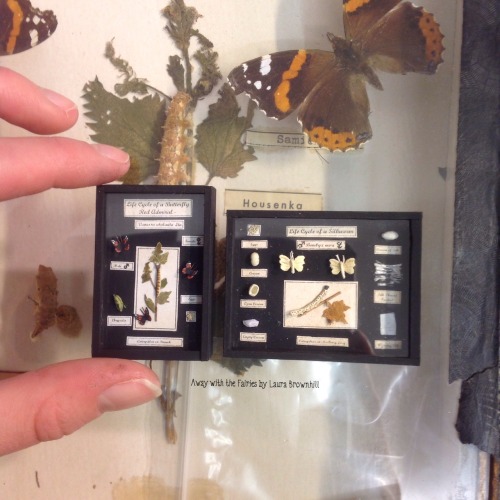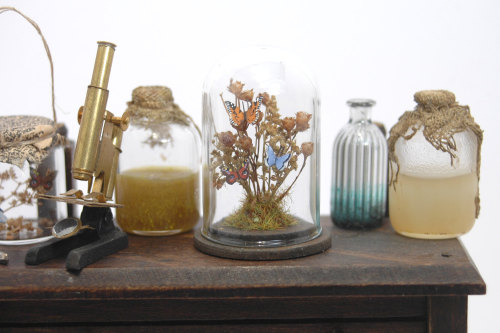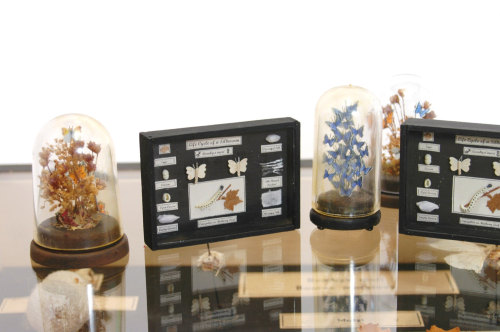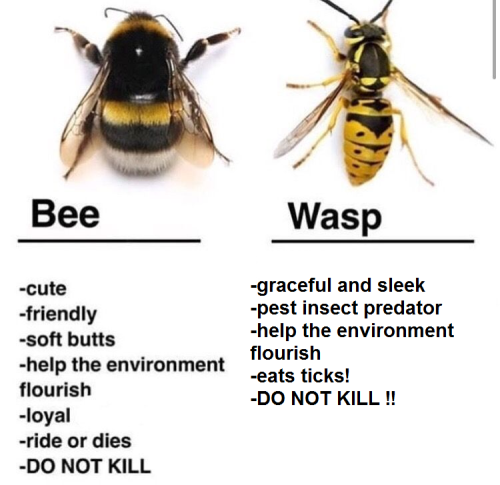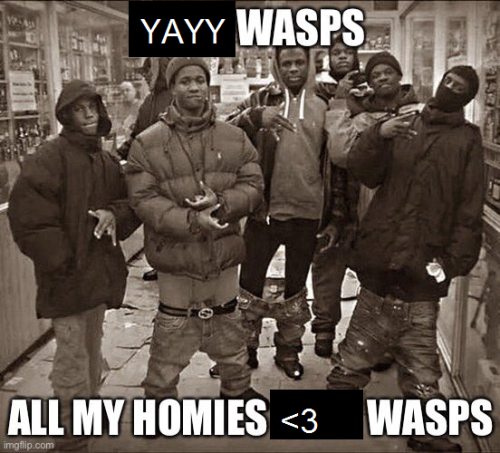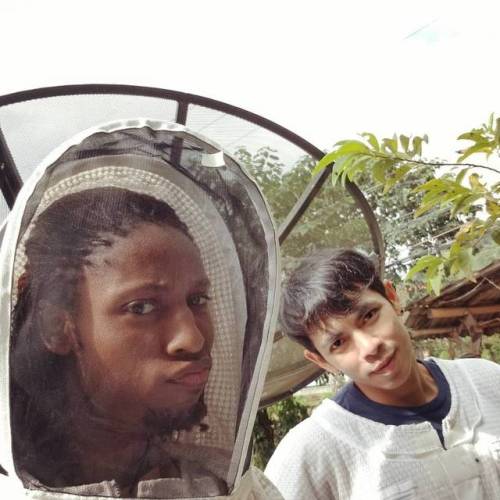#entomology
Life Cycle of a Silkworm
Away with the Fairies by Laura Brownhill
https://www.etsy.com/uk/shop/CountryTreasuresUK
Post link
Bowl of sugar cubes with a painted lady butterfly
Away with the fairies by Laura Brownhill
https://www.etsy.com/uk/shop/CountryTreasuresUK
Post link
How workers can become queens
A honey bee’s fate is decided at birth. The larvae develop to become a queen or a worker. If you’re born a queen, you get to rule the hive.
But other insects are more flexible.
For example, paper wasps and dinosaur ants are able to switch role from worker to queen at any point in their life - and new research uncovers the basis of this flexibility.
Researchers from the University of Bristol, the Babraham Institute and the Centre for Genomic Regulation analysed individual wasp and ant brains from queens and workers of both species to see whether caste differences could be explained by variations in how the genome is ‘read’ and regulated.In the paper wasps as seen in the video above, the queen is identifiable by behaviours such as shaking the abdomen and aggression to exert dominance.
By looking at the genetic makeup of the insects, the researchers were able to determine what genetic influences were controlling behaviour.
They found very little difference between roles, which was surprising given that hundreds of genes are involved in determining the differences between queens and workers in the honeybee.
This suggests that there is no single master gene determining the role of these wasps and ants.
So you don’t have to be born a queen after all…
Video: Solenn Patalano
How do ants keep clean?
For the first time, scientists at the University of Cambridge have uncovered the secrets of how ants use different types of hairs to clean away dirt from their antennae.
For an insect, grooming is serious business. If the incredibly sensitive hairs on their antennae get too dirty, they are unable to smell food, follow the trails of their kin or even communicate.
Camponotus rufifemur ants have a cleaning structure on their front legs that is used to groom their antennae. The device, similar in shape to a tiny lobster claw, is covered in different types of hairs. During cleaning, the antenna is pulled through the device, clearing away dirt particles using ‘bristles’ a ‘comb’ and a ‘brush’.
In the future, the research could be applied to the field of nanotechnology - where the contamination of small things is a big problem.
Video credit: University of Cambridge
There’s also of people spreading misinformation about hymenopterans! So I am here as certified bee scientist to set things right.
Bees are NOT wasps, ants are NOT wasps.
new hobby: editing anti-wasp memes to be pro-wasp. spreading my waspaganda
I wanted to add an extra fun fact to that last meme of “I pollinate, make honey, and generally am a nice guy” which is that Wasps also pollinate AND make honey AND are generally a nice guy :)
Thats right. Not only are they important pollinators to many many plants, but Paperwasps (Polistes annularis) actually make honey as well. Theyre a lot harder to access than honeybees, but it is edible by humans if you ever want to crack open a nest to give it a go. There are several other species of wasps globally that also make honey as well!
Also, to be taxanomically pedantic, bees actually arewasps. They are a branch off of the wasp superfamily Apoidea and are considered “vegetarian wasps”.
This is the second post I’ve seen about how how hymenopterans are “actually wasps”. I really need to clear this up as a bee scientist because it is so so incorrect.
Bees are NOT wasps, ants are NOT wasps.
Wasps are not a monophyletic group, they are a paraphyletic grouping, so I think this is why so many people are getting confused. I can go into a long explanation as to why, but for now don’t post if you’re not 100% sure!
Post link
Putting on that game face; getting ready to wrangle these wild bees! I’m glad I brought a second bee suit! P'Banky (a grad student friend from the lab) was going to help me do this in shorts! Short Shorts!! Let’s just say there are places from which I don’t want to help someone remove a stinger!
#ต่อย #HoneyHunt #MaeRim #MaeRimChiangMae #DoctorBuggs #Entomology #ตื่นเต้นจังเลย #HoneyBees #Apiscerana #AsianHoneyBees #doisuthep #research #researcher #wildbees #ดอยสุเทพ
(at โรงเรียนวัดโป่งแยงเฉลิมพระเกียรติ)
Post link
Ok so we just made it to the mountain and we’re on our way to meet The Honey Hunters! They’ve found four Apis cerana (Asian Honey Bee) colonies and they’ll catch them for us for 1000 baht (about 30 USD!) ตื่นเต้นจังเลย I feel like I should tip…I wonder how much it’s customary to tip a honey hunter.
#HoneyHunter #MaeRim #MaeRimChiangMae #DoctorBuggs #Entomology #ตื่นเต้นจังเลย #HoneyBees #Apiscerana #AsianHoneyBees #doisuthep (at โรงเรียนวัดโป่งแยงเฉลิมพระเกียรติ)
Post link
Hey there friend,
Have you ever wondered what your old pal Doctor Buggs has been researching for his thesis? What’s that? You say you only have 3 minutes? Well have I got the video for you!
https://www.youtube.com/watch?v=dq52ug3HTxY
After winning the regional rounds, I’m representing the good ‘ole US of A in an International science competition in which we are judged on the impact of our thesis research and how well we’re able to explain it in just 3 minutes. Part of the of it involves a popular vote. Mine is called “The Curious Case of the Bee Mite’s Bite”. I hope you’ll give it a watch and make your way over to this page to vote!
Vote now at www.u213mt.com.


Mystery Minizine 4-Packs now up!
etsy.com/shop/wormyorchidsart


Two more nasty little critters for the elemental beetles commision project I’m working on! Got to see a sneak peak of the final monster pages and im very excited to see it all together >:3c [psychic and acid]







SS Cicada
I don’t know where I got the idea for a dirigible cicada miniature model but here we are. Falling asleep with my YouTube queue probably with videos on the recent 17 year cicada cycle followed by the use of airships during WW1 must have blended together in my subconscious. I enjoyed creating the last insect - the custom bee - I had to do another but this was too large for a piece of jewellery.
So I worked on each separate section, hoping it would all fit together in the end. That’s always the scary part - will the wings fit on the body? Will the scale of everything maintain the illusion of an actual, albeit fantastical, airship once joined? Unlike very clever model scene makers I don’t work with a scale ruler. As I don’t fabricate or cast metal there is no real point - I’ll still have to adjust a part in my collection to fit.
I started with the wings - they bring everything together and set the scale. Like the last piece - the body is a brass screw electrical terminal. The abdomen has two main parts - the high copper piece with a grill and a lower section made from a cut out earing drop I filled in with resin. The wings are also filled with resin and a very light dusting of green and gold mica.
I’ve been making miniature nebulas lately so that is where the glass “hot air balloon” came from. It is fitted with a vintage brass bead cap, chains, tiny brass drops and internal details. While I was searching for pieces I came across the hand blown green glass bead with a swirl pattern. I had to incorporate it but it was difficult to do so. Adding a piece to one side of a symmetrical design alters the way it hangs. The swirl on the bead is matched with the black swirled disk hanging under the balloon.
She has wrapped wire legs with metal crimps, two brass and steel “propellers” affixed to the front, one large rear flag and bunting on the secondary “balloon” tether. Everything attached is done so using screws and very rarely, glue. I have no idea how many separate components I used but it would be well over 100. I’ve been working on and off for a week - probably about 40 hours not including the time sourcing parts, taking photos and writing this. The rigging was a nightmare. The chain at the back, connected to a “U” shape piece is the ship’s anchor.
A friend who is a genius wood worker turned some gorgeous wood bases for me. I think it’s Jarrah. It has four brass legs on the bottom. The hanging mechanism consists of a filigree disk, a vintage brass corrugated bead and assortment of brass rods, copper and brass tubing and beads. The top section pulls out so it can be packed for shipping.
One final surprise. I left a hole in the body for a tiny green LED light. It is difficult to use - turning on by pushing the light into a battery. But it could be used on special occasions to show her off. The battery type is a bit exotic but available online.
I’m thinking about entering her in a local art competition before putting her up for sale. I hope you like her.




I had a client recently ask me to make a steampunk mechanical bee for her and gave me a photo of a tattoo for reference. This is the result. The wings were a problem as I wanted them light. I ended up cutting down two brass pendant bases and filling them with UV resin. They then had to be sanded back to the brass and finally polished. I was aiming on transparent but the frosting works. Her body is an old brass electrical terminal cut to fit. Her wire legs are threaded through the body for security. The crimps are for effect and to stop the feet scratching if worn as a pendant.
She also contains an assortment of gears, pinions, screws, bolts, rivets, an electrical probe is her “stinger” and her wire antenna do rotate. I hope the client likes her but if not I’ll try again. I’ve already had interest so she will sell either way.
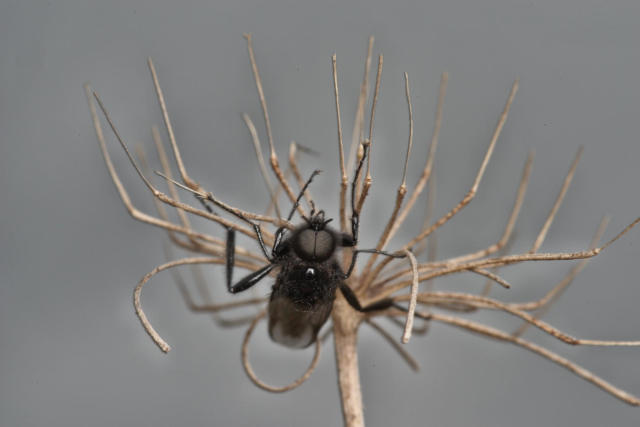
As shaggy as the old umbel of the great Hogweed on which it found refuge against the cold April wind, a freshly hatched Saint Mark’s fly.

Finally reunited!
After waiting all winter in the darkness of their lodges in the hollow of the bamboo stalks,
After flying incessantly around the nests,
Carpenter bee pairs form in the warm March sun



Mason bees visiting nests while searching females (Osmia sp, Megachilidae - March 2022)

European hornet(Vespa crabro - March 2022)

